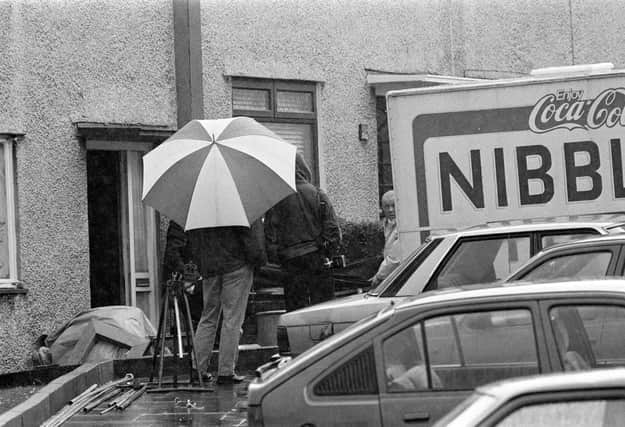No evidence police were withdrawn from area before UFF murdered Leonard Fox says judge


Mr Justice Humphreys dismissed an unprecedented legal challenge to the PSNI for refusing to confirm the existence of any Out of Bounds (OOB) Order before Leonard Fox was shot dead in the outskirts of east Belfast 30 years ago.
He rejected claims by the victim’s daughter that the force has a legal duty to disclose the information based on suspicions of a potential conspiracy surrounding the killing.
Advertisement
Hide AdAdvertisement
Hide Ad“There is no evidence of the use of an OOB Order in this case as part of some collusion between agents of the state and the killers of Mr Fox,” the judge said.
“There is only a speculative request for disclosure of information based on the findings and comments made during the course of investigations into wholly separate deaths.”
Mr Fox, 40, was gunned down by the Ulster Freedom Fighters while renovating a house in the Ballybeen estate in September 1992.
Years later, a review carried out by the Historical Enquiries Team (HET) revealed that he had been warned a month earlier about a threat to his life if he continued working in loyalist areas.
Advertisement
Hide AdAdvertisement
Hide AdIt concluded, however, that the original investigation was well managed, and identified no new means of prosecuting those responsible for the killing.
But Mr Fox’s daughter, Paula Lavery, suspected collusion between security forces and the terrorists who carried out the attack.
Her lawyers described it as a targeted murder in a busy residential neighbourhood at a time when state agencies had infiltrated and control over loyalist groupings.
Out of Bounds (OOB) Orders were issued to police and soldiers during the Troubles to clear out of designated areas for specific periods.
Advertisement
Hide AdAdvertisement
Hide AdSome bereaved relatives have held suspicions that the directives may point to prior intelligence about a planned attack on their loved ones.
In 2020 Ms Lavery’s solicitors wrote to the PSNI, asking if an OOB was in place at the time and location of her father’s murder.
The force responded that material would not be disclosed to the public without a court order.
Judicial review proceedings were brought against the police, claiming the refusal to disclose any existence of an OOB breaches Article 2 of human rights legislation.
Advertisement
Hide AdAdvertisement
Hide AdCounsel for the PSNI stressed that no reference was made to any such directive in the HET probe which identified no evidence of collusion in the killing.
Backing those submissions, Mr Justice Humphreys described Ms Lavery’s case as unarguable.
He stated: “It cannot be said that in any killing which occurred in Northern Ireland between 1988 and 2000, Article 2 generates an automatic right to disclosure of information from the police.
“It is necessary that any such request for disclosure has a basis in fact as well as being in the public interest.”
Advertisement
Hide AdAdvertisement
Hide AdWith the challenge also rejected on grounds of delay, the judge confirmed: “The necessary substratum of evidence does not exist in this case and therefore it cannot be said to be arguable that the failure to make disclosure is a violation of Article 2.”